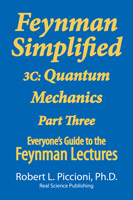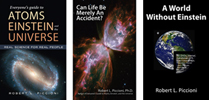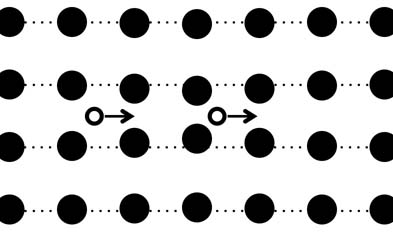|
|
3C:
Quantum
Mechanics
Part Three
Feynman
Simplified 3C covers
the final third of Volume 3 of The Feynman Lectures on
Physics. The
topics we explore include:
- Quantum Behavior of Elementary
Particles
- Angular Momentum & Rotations
of Any Spin
- Electron Atomic States & The
Periodic Table
- Philosophy of Wave Functions &
Probability
- Macroscopic QM: Superconductivity
- Entanglement, Schrödinger’s Cat
& Teleportation
- EPR Paradox: QM vs. Local Realism
- Alternative Interpretations of QM
The
phenomenon of electric current flowing without resistance derives from
a remarkable behavior of electrons flowing in crystals at very low
temperatures.
Physicists
were initially quite surprised to discover that electrons can bind
together in any fashion. They are negatively charged particles that
repel one another, and they are identical fermions that cannot share a
common state. In isolation, these facts certainly preclude electrons
binding to one another. But, in the more complex environment of solid
matter, other considerations apply.
In
very simplified terms, as an electron moves through a crystal (a solid
with a regularly repeating pattern of atoms), its negative charge
attracts atomic nuclei and repels lattice electrons, resulting in a
very slight shift of net positive charge, as sketched below.
Black
dots represent net positive charges, and open circles represent
electrons flowing through the crystal, with their velocities indicated
by arrows. Positive charges moving toward the right-hand electron, and
negative charges moving away from it (not shown in figure), create a
small region of net positive charge. That positive charge attracts the
left-hand electron, facilitating its passage through the crystal.
|
|
|
Available
for $7.99
Click
on
the
following

Feynman
Lectures
Simplified 3C:
Quantum Mechanics
Part Three
See
all the
books in the
Feynman
Simplified
Series
|



